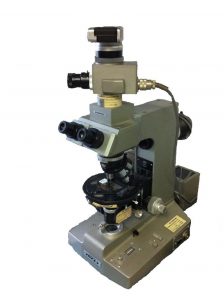
Asbestos, from the Greek word for “inextinguishable,” is something of a magical material. It can be woven like thread, used to make anything from clothing to drywall, and it absolutely will not burn. This makes perfect sense, as asbestos is a "rock"; a metal silicate. It has been said that it is an almost perfect building material, except for one factor: It is very hazardous to your health.
It can be found in nature “growing” among certain other rocks (minerals) almost like cotton on bolls; and like cotton it can be turned into textile-like materials. The ancient Romans did just that, using it to make, among other things, tablecloths and napkins, which could then be cleaned by simply being thrown into a fire. (The slaves who wove these textiles developed chest problems and died young, and the Romans thereby discovered asbestos’s great drawback: it is very bad to breathe its needle-like fibers.)
Thanks to a number of well-publicized tragedies involving stampeding crowds and death by fire, theaters up until the 1930s were considered unsafe unless they had asbestos stage curtains.
The bottom halves of the two former Trade Center towers in New York were built using asbestos products. If your home was built during or before the 1980s, it probably has some asbestos in it. Brake pads in America were made using asbestos until recently (some commercial pads still contain asbestos).
Here at Lyle Environmental we used to have an autoclave glove made from asbestos which, by consensus, was the best autoclave glove we have ever used, far superior to gloves made from other fire-retardant substances. And this nicely illustrates a point about asbestos: when intact, and/or safely incorporated into another substance, it is relatively benign. It is only dangerous when its fibers become airborne.
Volumes have been written on the negative health effects of breathing asbestos fibers. Suffice it to say you most definitely SHOULD NOT breathe abestos fibers; they can and do cause asbestosis, lung cancer, and mesothelioma (cancer of the lining of the lungs).


COPYRIGHT © 2024 LYLE ENVIRONMENTAL. ALL RIGHTS RESERVED. | (614) 488-1022 | 1507 CHAMBERS ROAD / COLUMBUS, OH 43212